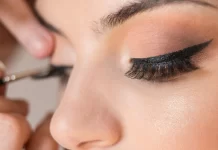So you are in the market for an engagement ring or think you might be – Congratulations! Although we don’t know your girlfriend, we’re sure that she’ll be overjoyed when you propose her.
And thus we come to address the elephant in the room, Ring!
Shopping for an engagement ring is an exciting time! But between the cut of the diamond, the style of setting, and the quality of the stone, there is a lot to consider. For many guys, walking into a jewellery store feels like entering a maze. There are so many wrong turns to make and so many questions to ask. How big should it be? How much should I spend? What if I buy a fake? Don’t fret. This guide will help you get enough bling for your buck and a ring she (hopefully) can’t say no to.
- First up: Budget – Being realistic about how much you can afford is the key. So buckle down and think hard about this situation before you enter a store. The age-old three month’s salary rule is antiquated and unrealistic. Experts at Aidadesignus advice, ‘Be smart and buy what makes financial sense for your individual situation’. Play it smart in cases like these, for example, you can compromise by choosing white gold instead of platinum for the band and it will give you more budget for the gemstone.
- Avoid getting ripped off – A gemstone is gauged on 4C’s (cut, colour, clarity, and carat), however when seeking a jeweller, there are only two C’s to consider credential and certifications. Researching and knowing about these things can help to alleviate your fears of getting ripped off and identifying potential scammers. Talk to your friends and social circle about their experiences and recommendations, read online reviews and Better Business Bureau ratings. Insist that your jeweller provide you with the AGS (American Gemmological Society) or GIA (Gemmological Institute of America) certification with the diamond. These certifications are the highest standards for gemstones. More importantly, plan in advance as working with a jeweller requires 5-6 weeks off time (depending on your order).
- Style – Human nature is an excellent feature as it distinguishes people from each other. Infusing her style into the ring is very important and can be as easy as taking a look in her jewellery box. Take a look at what she is wearing, her taste, lifestyle and her job. Additionally, notice what rings catches her eye when you pass a jewellery store, to determine what’s appropriate for her. There is another alternative to this conundrum, and that means turning her girlfriends into your accomplices to get some insights. If all else fails, axe the surprise element and get her involved in the ring selection process. But be warned, once you open that door, there’s no going back.
- The 4C’s – As mentioned earlier diamonds are graded according to 4 C’s: Cut, colour, clarity, and carat. Playing a balancing act between the four C’s will allow you to find the right stone within your budget. Though each C is important, experts suggest never compromising on cut grade. Not to be confused with shape, cut defines how well a diamond will sparkle when it hits the light.
- Clarity – To put things into perspective, an industry analyst once defined clarity as “Clarity grades are based on extremely fine distinctions in the size and number of inclusions, or flaws, present in a diamond,” A clarity measurement scale ranges from flawless (FL) to included which contain flaws that may affect the brilliance of the stone. Thus, safe to say, many experts remark that compromising on clarity is okay, considering it will keep you in your budget.
- Color – A diamond’s color is graded on a scale beginning at D (colorless), to H, N and Z (canary yellow). Industry experts reveal that color (alone) is not a quality of beauty, rather it shows the rarity of the diamond and thus helps in changing its price. Experts at Aidadesignus remark that shifting your way down the color scale will leave you room in your budget to invest in the key areas of cut and size.
- Carat – Yes, the size matters. Studies have revealed that ladies prefer on wearing gemstones and that for everyday wear you should buy the biggest diamond you can afford. While it’s awesome to have high quality, you want something visible. So, if your girl wants a big rock, splurge on the size and skim on clarity.
- Cut (Shapes) – Popularity holds a significant influence in buying decisions when it comes to diamond shape. Market data, accumulated over the past few years has revealed that round cuts are the market leaders by a comfortable margin. But don’t let the trends bog you down. As mentioned earlier, buying an engagement ring is a very special moment, and shape should be a reflection of the girl who’s wearing it. Round is traditional; princess cuts are feminine, but cushion cuts are for someone who is trying to make a little more of a statement by looking unique.
- Budget Balancing around 4C’s – A very high-quality diamond, regarding color and clarity, of the same carat weight, can cost four times as much as a diamond with lower color and clarity of the same weight. Suffice to say; experts suggest a colorless to near colorless diamond (F-G grading) with eye-clean (no marks visible) clarity (VS/SI grading), and a VG (very good) cut grade for maximised brilliance.
- Band Selection: Gold vs. Platinum – If somebody were to use one word to describe both gold and platinum then it would be exquisite. However, that’s where the similarities end. Gold is a more traditional approach, whereas platinum is modern. Gold will wear out faster and the claws holding the diamond need checking over the years to make sure they don’t loosen, and platinum is much harder than gold. But platinum costs more than gold, so that’s the downside of it.
- The visual importance of settings – popular setting includes the classic Tiffany (prongs), the contemporary bezel (the ring’s metal surrounds the diamond entirely), and the diamond-clustered Pavé. If you’re working with a tighter budget and have to purchase a smaller stone, the setting can act as an optical illusion to offset its size.



















